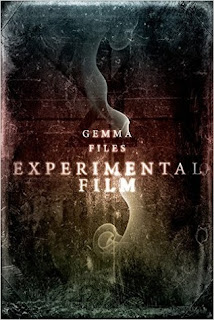Experimental Film
"You could argue—as I have more than enough times, as part of my Film History lecture—that, no matter its actual narrative content, every movie is a ghost story." So writes Gemma Files in her interesting but uneven novel, Experimental Film. Set in Canada, it revolves around a film critic researching the first woman in Canada to make films, and a Slavic fairy tale character behind it all.
The context of the book is fascinating. Lois Cairns narrates. She is an expert on Canadian film (I must say that seems like a small subject). A woman named Iris Whitcomb made some films in the silent era about a Wendish myth, Lady Midday, who would show up at noon and sometimes cut your head off (Whitcomb is fictional, Lady Midday is a thing).
Cairns has an autistic son, and is constantly at odds with an experimental filmmaker named Wrob. She will also have a mysterious series of seizures. Files, through Cairns, gives a lot of info on early filmmaking: "Silver nitrate film, in particular, is the Schrödinger’s Cat of cinema—you can open the box once, maybe, take a look inside, but after that you kind of have to take it on faith it ever existed in the first place. But then, all film is illusion; it’s just an illusion that looks like the truth."
The book starts slowly--I wondered if it was a horror novel or not--but the last section moves swiftly and tautly. This is where the book turns to the supernatural, which almost seems like a mistake, since Cairns is such a logical character and she's led to understand that Lady Midday is real.
So I give the first half two stars and the last half four stars, averaging out to a three. This reminded me of a film I saw a few months ago called Dawson City: Frozen Time, in which many films from the silent era were unearthed (all shot with silver nitrate). As Files writes: "In its purest form, done right, watching an experimental film is the closest you can come to dreaming another person’s dreams. Which is why to watch one is, essentially, to invite another person into your head, hoping you emerge haunted."
The context of the book is fascinating. Lois Cairns narrates. She is an expert on Canadian film (I must say that seems like a small subject). A woman named Iris Whitcomb made some films in the silent era about a Wendish myth, Lady Midday, who would show up at noon and sometimes cut your head off (Whitcomb is fictional, Lady Midday is a thing).
Cairns has an autistic son, and is constantly at odds with an experimental filmmaker named Wrob. She will also have a mysterious series of seizures. Files, through Cairns, gives a lot of info on early filmmaking: "Silver nitrate film, in particular, is the Schrödinger’s Cat of cinema—you can open the box once, maybe, take a look inside, but after that you kind of have to take it on faith it ever existed in the first place. But then, all film is illusion; it’s just an illusion that looks like the truth."
The book starts slowly--I wondered if it was a horror novel or not--but the last section moves swiftly and tautly. This is where the book turns to the supernatural, which almost seems like a mistake, since Cairns is such a logical character and she's led to understand that Lady Midday is real.
So I give the first half two stars and the last half four stars, averaging out to a three. This reminded me of a film I saw a few months ago called Dawson City: Frozen Time, in which many films from the silent era were unearthed (all shot with silver nitrate). As Files writes: "In its purest form, done right, watching an experimental film is the closest you can come to dreaming another person’s dreams. Which is why to watch one is, essentially, to invite another person into your head, hoping you emerge haunted."



Comments
Post a Comment